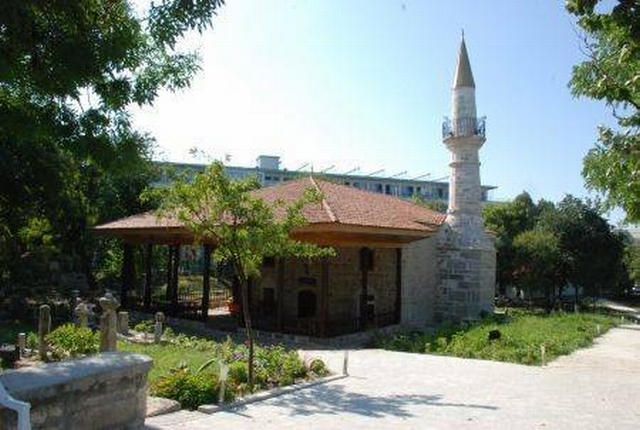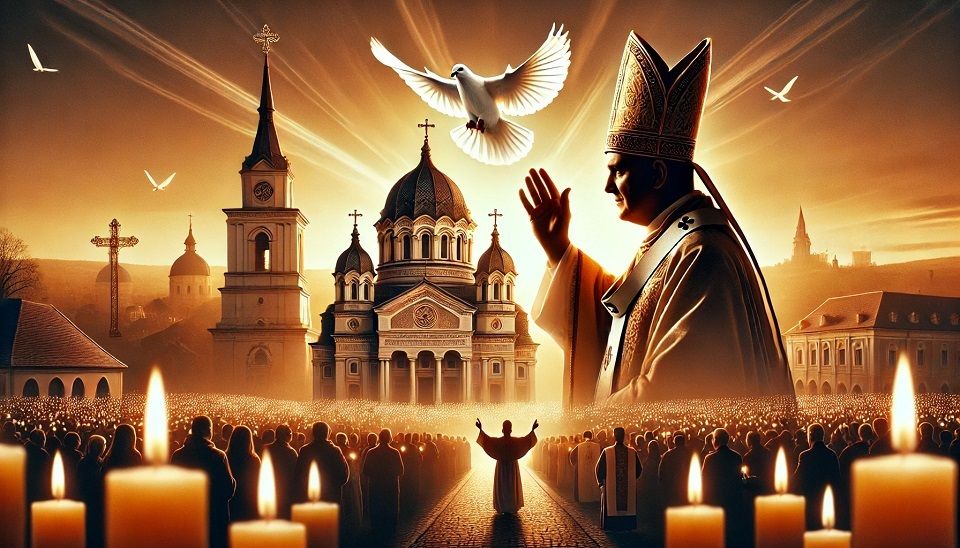The Esmahan Sultan Mosque in Mangalia
One of the most beautiful attractions of Mangalia

Christine Leșcu, 28.03.2015, 14:00
Being at times part of the Macedonian, Roman or Byzantine empires for most of its history and for short periods included in the territory of Wallachia, the historical province of Dobrogea was part of the Ottoman Empire between the 15th century and the 19th century, when it joined the Kingdom of Romania. During that period, a strong Muslin community developed here, with its specific religious traditions and culture. Its longstanding presence has left traces to this day, visible in buildings, traditions or people themselves. For instance, the oldest mosques on present-day Romanian territory, the ones in Mangalia and Babadag, date back to the 16th and 17th centuries respectively. Founded by the Ottoman General Ali Gaza-Pasha, the mosque in Babadag is a historical and religious architectural monument built between 1609 and 1610. Its courtyard hosts the mausoleum where the founder of the mosque, the Ottoman military commander Ali Gaza, was buried.
The mosque in Mangalia is even older. It is located in the old part of the town and looks like a welcoming family home, surrounded by a cool and comforting garden. Ismet Halil, the imam of the Esmahan Sultan Mosque, tells us about the history of this monument:
“The Esmahan Sultan Mosque is one of the oldest in the country, dating back to 1573. It was named after its founder, princess Esmahan, who was the daughter of the Ottoman Sultan Selim II and wife to Sokollu Mehmet Pasha. The mosque was made of stone by Turkish masons, and the walls are 85 centimeters thick. Inside the mosque there is the mihrab, the altar, indicating the direction of the Kaaba in the holy city of Mecca. From here, the imam leads the prayer. On the right there is the minbar or pulpit from where the imam delivers his sermons on Fridays and holy days. The minaret is placed on the northern side of the mosque. The minaret gallery is reached by climbing on interior spiral staircase.”
From the top of the minaret tourists can get a bird’s eye view of the town of Mangalia, of the beach and the seafront. The view is gorgeous, as the minaret overlooks both the newer part of the town, and the old city centre, with its small white houses, reminding of Greece or of the Arab landscapes. The Esmahan Sultan Mosque itself is a historic monument, but so is its courtyard. Ismet Halil tells us why:
“There is the ritual fountain used by the guests, mostly sailors, for the ablution, the purification that precedes prayers in the Muslim tradition. Also located in the courtyard of the mosque are a number of monuments devoted to personalities like Mehmet Pasha. Military and civilian personalities have also been buried here. Some of the tombs have been destroyed, over time, but others have been preserved to this day.”
Some of the tombstones in the 3-400-year old cemetery in the courtyard of the Esmahan Sultan Mosque have inscriptions in verse. For instance, engraved on the tombstone of a young girl is a Turkish text that could be roughly translated as “I came into this world / but have not had enough of this life / It was probably meant to be / But I did not know that before.” A text on another tombstone reads, “Today is my turn, tomorrow will be yours.”
The exotic and peaceful air of the Esmahan Sultan Mosque attracts both Romanian and foreign tourists, who come to visit it in growing numbers. Whereas in the communist years the decrepit garden and cemetery were not fenced, recently the mosque has been restored and has become even more attractive. Its aspect has not changed at all since its establishment by princess Esmahan. And apart from its tourist role, the mosque is still used as a place of worship by the Muslim community in Mangalia, counting around 3,000 believers.





























